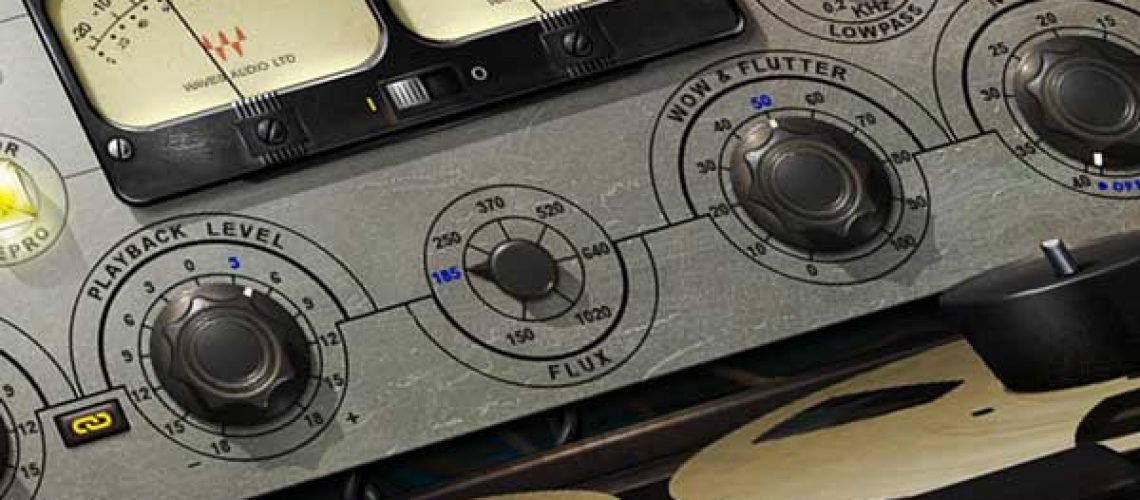A saturator is an audio effect that applies non-linear compression and distortion to its input audio signal. Saturation can occur through various different means, but it’s common for music producers to use tape saturators to apply saturation to their songs.
Plugin tape saturators seek to emulate the effect that occurs when the input voltage of an analog tape machine exceeds the limit of a roll of tape’s ability to record it.
The following video by Short and Sweet Tutorials does a great job of quickly explaining the concept of tape saturation.
Other forms of saturation include tube saturation, which emulates the sound of audio driven through tube amps, and transistor saturation, which mimics the sound of audio driven through transistor-based circuits.
There are multiple different ways you can use saturation, regardless of the type of saturation you choose. Some forms of saturation may be more suitable for specific sound sources than others, so experiment.
1. Make Your Basslines More Audible
Many basslines that have been synthesized are built off of a sine wave. While this creates low-end that is big, full, and round, your bassline may lack upper harmonic content.
The reason upper harmonics are important is that they can be heard on smaller playback devices like cell phones and laptops. Your brain is capable of using these upper harmonics to create a phantom fundamental frequency that may not be audible on the speakers you’re listening to.
Soundtoys’ Decapitator plugin is my go-to choice for adding upper harmonics to basslines. It allows you to apply 5 different styles of processing, each with its unique character. The iconic “Punish” button will enable you to completely mangle your basslines, which is a fun additional feature.

Learn more about creating mixes that sound good on a variety of playback systems by reading “How to Make Your Mixes Translate to Consumer Speakers.”
2. Make Your Drums More Aggressive
Saturation can be applied to individual drums, or drum busses, to make them sound more aggressive. The distortion a saturator applies can make your drums sound dirtier, and grittier, while the compression it applies can tame transient material.
One of the exciting side effects of applying saturation to elements in your mix is that it can increase perceived loudness without increasing signal level.
Broadband limiters and many other threshold-dependent devices don’t take the entire frequency response of their input signal into account when they apply processing. All they care about is how much the input signal level is exceeding the threshold level. Keep in mind that the input signal level is much different than perceived loudness.
Low-end frequencies are usually what trigger threshold-dependent devices first, which means you can add upper harmonic frequency content to your drums without drastically affecting their signal level.
The nail in the coffin is that even if the distortion applied by the saturator you use slightly increases the signal level of your drums, the compression it applies will bring the signal level back down.
A plugin like Reviver by Fielding DSP creates harmonic distortion and gives you full control of overtone generation and volume. It allows you to add second-order harmonics, which tend to sound “warm” and “smooth,” as well as third-order harmonics, which can add “punch,” “fatness,” and “detail” to your drums.

Learn more about making your music loud by reading “How to Make Your Music Loud.”
3. Thicken Specific Frequency Ranges
A multiband saturator, like FabFilter’s Saturn, is capable of selectively applying saturation to different frequency bands. You’re able to thicken frequency ranges that you want to emphasize and draw more attention to.

Let’s assume you’re working with stems a producer has sent you and you realize the synth group feels “thin” in the midrange. You can fix this problem by applying Saturn to the synth group, creating a new band that targets the 1,000-5,000 Hz range, and then turning up the drive amount. Experiment with Saturn’s different saturation algorithms to find the one that suits the source material best.
Saturators are colorful tools, which is something you should keep in mind when reaching into your mixing toolkit. Do your guitars lack character in the low-midrange or do they just need the low-mids boosted? Use a saturator as a colorful solution for sounds that feel thin, and an EQ as a more transparent option.
Learn about more EQ mixing techniques by reading “4 Essential EQ Techniques to Get Clean Mixes.”
4. Tame Top-End Harshness
Saturators allow you to tame top-end harshness and can come to the rescue when working with sizzling cymbals, vocals, and guitars.
The frequency range in which harshness tends to manifest itself is around 6,000-8,000 Hz. You can either use a multiband saturator to target this frequency range, or a broadband tape saturator, like Waves’ Kramer Tape, to warm your input signal and also deal with harshness.
It’s often easier to deal with harshness using a saturator than it is using a multiband compressor or dynamic EQ. The distortion a saturator applies can mask piercing frequencies, which is a solution different than frequency attenuation.
Learn more about dealing with harshness in your mix by reading “How to Fix Harsh Vocals.”

It’s not always necessary to have a high level of surgical control over your tracks. In some situations, surgical processing is required, but when it comes to saturators, don’t be afraid to really drive your source material through them.
Mixing music is about creating a product that feels good, which is sometimes different than what sounds good. Saturators can help humanize your music by infusing it with unexpected character and feeling.
Make sure to follow Black Ghost Audio on Facebook, Twitter, Instagram, and YouTube to stay up to date on the latest music production tips and tricks. There’s new content every week, and I don’t want you to miss out.




